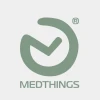Over the past 5 years the world's population has increased by 4.7% and, according to forecasts, will increase by another 20.2% by 2050. The UN Food and Agriculture Organization predicts that it will be necessary to increase global food production by 70% by 2050 to cover the needs of the population. This is an immense burden on farms and the agricultural sector as a whole, given that the trend of moving to cities continues and fewer people are willing to work in the field of agriculture. In such circumstances, IoT technologies can become a real salvation. In this article, we will tell you how the IoT is already used in agriculture and we hope that this article will inspire you to create your unique product.
Smart Agriculture is a term used for the introduction of Internet of Things technologies, sensors, robots, and artificial intelligence into farms. The main purpose of using Smart Agriculture is to improve the quality of manufactured products, as well as increase productivity. By 2025, it is predicted that the global smart agriculture market will be valued at $15.3 billion, which is a three-fold increase compared to 2016.
Which projects have already been implemented in the field of Smart Agriculture?
Remote machine control. Cars and heavy equipment are controlled remotely using GPS. In addition to remote control, the machines themselves can recognize the type of soil and its texture, thus selecting the intensity of the applied efforts. They improve their performance with the help of machine learning and tend to become increasingly independent. Remote control significantly reduces the number of manpower necessary for cultivating land, because several machines can be controlled by one person.
Robots for strenuous manual labor. Robots are already performing tasks of loading and unloading cargo, planting large trees, and transporting equipment over long distances.
Automatic weeding. Robots use digital image processing to recognize weeds and spray them with a special tool. This not only eliminates manual labor for farmers but also significantly reduces costs. Previously, for the destruction of weeds, farmers processed entire fields completely, and this required several times more weed rotation funds. In addition, it is a contribution to environmental protection and a great way to manage crops with fewer pesticides and herbicides.
Harvesting. Thanks to image recognition technology, robots determine the degree of maturity of the fruit and collect it at optimal times. They are also able to identify spoiled or rotten fruits. Even though harvesting by robots is still inferior in speed compared to human manual labor, a robot can harvest 24 hours a day.
Monitoring health and location of livestock. With the help of sensors built into collars, it is possible to monitor the health and mobility of an animal, and, in case of anomalies, assist them in a timely matter and separate them from healthy animals to avoid the spread of infection. GPS sensors will help determine the animal’s physical position, making it much easier to find ones who might have wandered off.
Monitoring of soil quality. Specialized sensors determine the soil type, mineral composition, acidity, and moisture levels, so that the sensor helps to determine dry places which require watering, choose the type of fertilizer and the method of cultivation, as well as the type of plant that best suits such conditions.
Monitoring of weather conditions. Though one of the oldest technologies, it is also one of the most useful. Due to its relatively low cost it has become widespread, and nowadays farmers determine humidity, temperature, precipitation, and lightning activity with high accuracy. Thanks to accurate and timely data, farmers can respond to weather changes in time and grow crops in the best possible conditions. This is especially important for demanding and delicate plants.
Drones. Drones, combined with image recognition technology and machine learning, have wide development prospects. The possible fields of application are extremely varied, from analyzing the state of crops to determining growth anomalies.
What will be needed to effectively implement IoT solutions on your farm?
1. Define the purposes of data collection
2. Make a list of parameters you would like to measure (for example, lightning activity or soil moisture levels)
3. Determine the stages of implementation
4. Determine the budget
5. Test the effectiveness of the solution
6. Scale it up
It sometimes turns out during the analysis process that the solution you need is more complex than those that are readily available on the market. Many preexisting solutions will not take into account local specificities and will not be adapted to your exact type of business. Grinn has been developing IoT programs for over 12 years and we are ready to create a unique project custom-fit to your needs, goals, and business model. Tell us about your idea!
 Kateryna Kozakova
Kateryna Kozakova






















